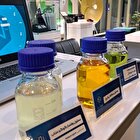Iranian Research Finds Cinnamon, Damask Rose Protect Blood Hemoglobin against Ozone

The findings of the thesis of Ma’edeh Mahlouji, a master's student in biochemistry, entitled ‘Study of the Effect of Cinnamaldehyde and Phenylethyl Alcohol on Changes in Blood pH and Hemoglobin Aspects in Blood Samples Treated with Ozone at High Concentration’, show that the active ingredient in cinnamon, and damask rose and its derivatives, like rose water, have a significant antioxidant role.
In this study, the structural change of hemoglobin protein, which is the most abundant protein in blood, was examined under the influence of ozone gas at the highest concentration. This study showed that ozone at very high concentrations causes structural changes in hemoglobin protein, as the most important oxygen-transporting protein.
Next, the effect of ozone gas was re-examined in the presence of the active ingredients of cinnamon and rose, cinnamaldehyde and phenylethyl alcohol, respectively, and it was determined that these two ingredients, specially phenylethyl alcohol, are capable of playing a very effective role in combating ozone. The results of this research have been published in the Journal of Molecular Structure.
A study by scientists at the University of Kansas Medical Center have found in 2023 that air pollution, specifically ozone exposure, has a disruptive effect on the genes responsible for circadian rhythms in the lungs.
As the sun rises and sets, a symphony of biological processes unfolds within our bodies, choreographed by internal timekeepers called circadian clocks. These circadian rhythms are important for maintaining different internal biological cycles that regulate various physiological processes, such as metabolism, immunity, and inflammation. When circadian rhythms are disrupted, it can lead to adverse health effects, including increased susceptibility to diseases, the journal Advanced Biology reported.
In a recent scientific study, scientists have gained new insights into the impact that air pollution has on the genes that control circadian rhythms, commonly called “clock genes”, and the downstream physiological effects, suggesting a relationship with inflammation that occurs in the lungs after exposure.
The study looked at ozone, a common environmental pollutant primarily produced by vehicle emissions and industrial activities, and known for its harmful effects on respiratory health, particularly in individuals with asthma.
“Understanding how the genes and proteins that regulate the circadian clock in the lungs behave might shed light on the unknown mechanism that can control environmental exposure-induced lung injury,” said Isaac Sundar, associate professor in the Department of Internal Medicine at the University of Kansas Medical Center and first author of the study.
4155/v





















